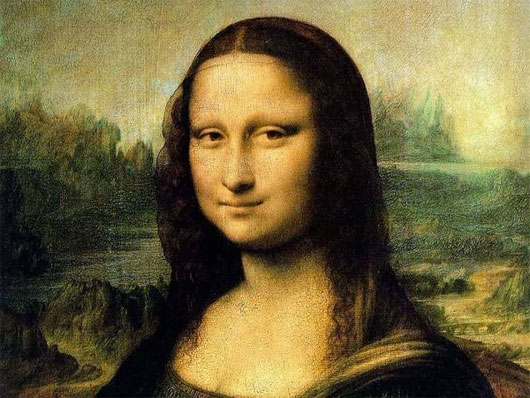Use DNA technology to identify Mona Lisa's identity
According to ANSA, Italian experts will take DNA samples from Lisa Gherardini del Giocondo's family members' corpse to determine if the character shown in the Mona Lisa picture of Leonardo da Vinci genius is true. whether the woman lived in central Italy in the 16th century.
The DNA samples were taken from the del Giocondo family's tomb in Santissima Anunziata church in Florence, Central Italy, including Lisa's grave, her husband Francesco Gherardini, a famous merchant of the century. 16, and their children.
Experts assessed by DNA Giorgio Gruppioni and Antonio Moretti along with a group of other Italian scientists will take these samples on April 29.

Mona Lisa picture.(Photos: Wikipedia)
Currently, they are looking at the bones collected in a convent in Florence, where Lisa Gherardini died in 1542, at the age of 63. She is thought to be the role model of the Mona Lisa in her painting. Leonardo da Vinci's pot, currently on display in the Louvre Museum in Paris, France and attracts 6 million visitors every year.
These bones were taken from Lisa Gherardini's grave during her grave excavation in 2012 to determine whether they came from a time when the model of Leonardo da Vinci lived.
The DNA of these bones will be compared to the DNA of five Gherardini's children. If you see a match, it can be said that the woman painted by da Vinci in the main Mona Lisa picture is Lisa Gherardini del Giocondo.
So far, there are not many sources of data related to Lisa Gherardini's life. However, it is known that Lisa was born in Florence, married to Francesco, then wealthy, in 1495, when she was only 16 years old. They had five children together and lived in a house in central Florence.
Like many merchants and nobles of the time, Mr. Giocondo was an art lover and according to art historian Giorgio Vasari he himself hired Leonardo da Vinci to paint the portrait of his wife.
However, according to art historians, da Vinci spent many years moving too much to paint the picture and could have been completed in 1516 in France, three years before his death.
In 2005, an expert from the University of Heidelberg, Germany, discovered a note in a written document in 1503, that Leonardo da Vinci was drawing a portrait of Lisa del Giocondo. However, this can only be confirmed by scientific practice after the DNA test results of Italian experts.
- Mona Lisa's true identity
- Identify Mona Lisa's
- Picture of the little Mona Lisa
- Identify crime by scar, tattoo
- NASA 'shoots' the Mona Lisa image onto the Moon
- Behind the smile Mona Lisa
- Egypt: Identify the identity of mummies more than 3,000 years old
- See the nose to detect terrorism
- Identify corpses by maggots
- Password recovery technology
- There are two 'Mona Lisa'
- Discover the world's first painting of the Mona Lisa
 Discovered an ancient centipede fossil 99 million years old
Discovered an ancient centipede fossil 99 million years old Discovered bat-like dinosaurs in China
Discovered bat-like dinosaurs in China Discovered a 200-year-old bronze cannon of the coast
Discovered a 200-year-old bronze cannon of the coast Discover 305 million-year-old spider fossils
Discover 305 million-year-old spider fossils